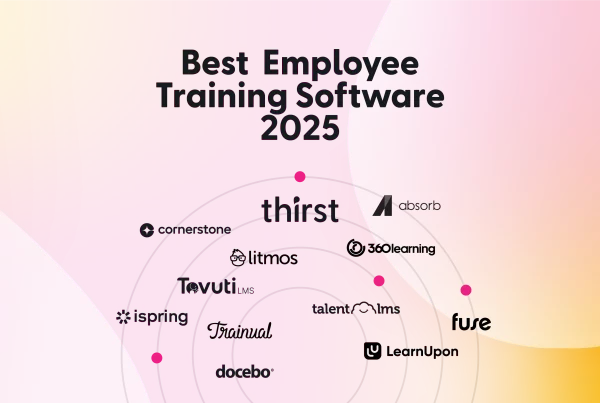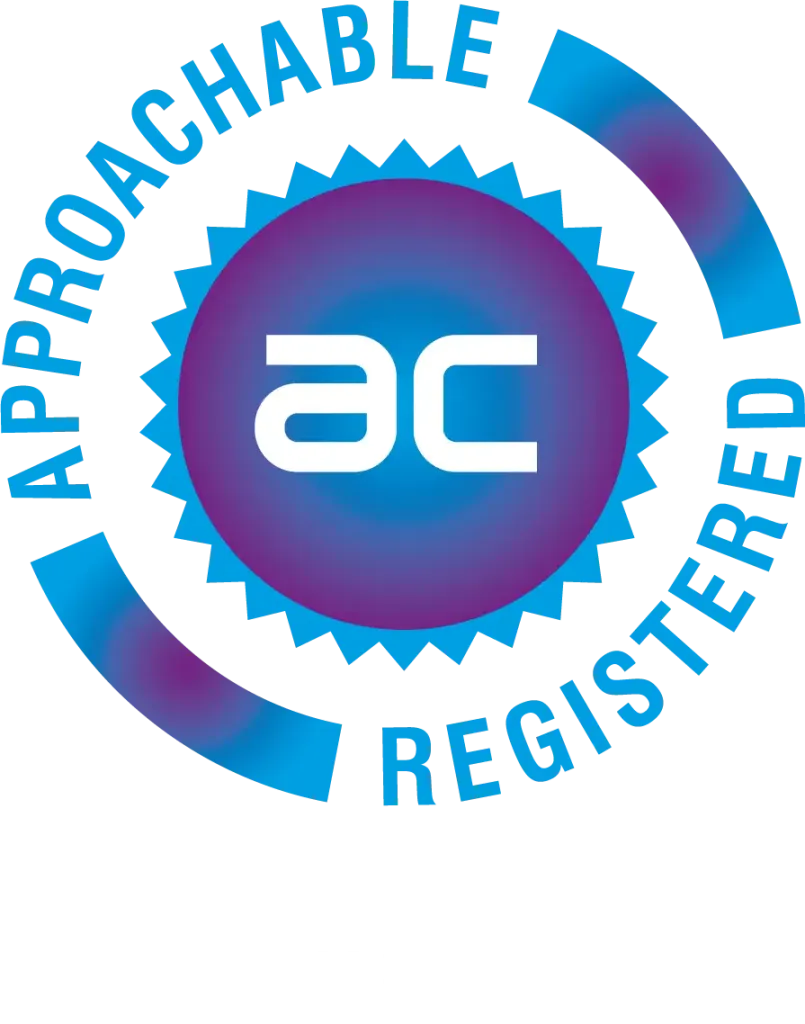The most effective, successful businesses employ individuals who are both skilled and competent.
However, discerning the difference between these two things can be a challenge; especially when L&D professionals are challenged with nurturing and developing them. But, worry not, Thirst is here to tell you everything you need to know about the difference between skills and competencies…
What is competency?
Let’s kick things off with a deep dive into competency.
Grab your dictionary, and it’s likely you’ll find competency defined as: ‘the set of demonstrable characteristics and skills that enable and improve the efficiency and execution of a job’.
Take note of the fact that we highlighted ‘and skills’ in that definition. That’s because competency is an overarching characteristic – which embodies skills (as well as other traits). In fact, competency often serves as the basis for skills standards.
In other words, competency is a measure of both proven skills and proven knowledge.
With that in mind, how can learning and development professionals develop employees so that they’re competent?
It’s about truly understanding the nature of competency. Consider the following…
Values
The competencies that an individual displays are in large part – but not entirely – based upon their individual values.
These values tend to centre on those attributes that an individual deems to be ‘important’ and ‘worthwhile’.
An interesting way of thinking about this is to consider some of the commonly used terms and phrases that are associated with the world of work – “a job worth doing, is worth doing right”.
An individual who values their work will, by extension, become competent at it (all other things being equal).
It’s essential to note that competency is also defined by work-based values.
That is, the values that your organisation imbues in your employees. Organisations should value competency, and select along those lines, i.e. competency should be promoted as a core virtue amongst employees – with the most competent amongst them promoted and/or rewarded as a result.
Should an organisation fail to value competency – instead rewarding those employees that display characteristics other than competency – it will quickly find itself losing those staff who value competency, i.e. those who want to do their job well.
Rigidity
Much talk is made in the L&D space about agile learning and the potential for employees to rapidly learn new skills.
But, when it comes to nurturing employees to become truly competent at something, the opposite is the case.
Becoming competent at something takes time, and isn’t necessarily something that can be manipulated or accelerated… ⏰⌛
Think of it this way. Near enough, everyone is able to write. But, it takes years to become a writer of skill. The same goes for nearly any other competency you care to mention. ☝️☝️
It’s for this reason that things like master craftsmen exist. They’ll often be found doing the same job as a regular craftsman – but because they have decades of experience, they’re considered to be truly competent. That’s why a product crafted by a master craftsman is typically valued more highly (both financially and emotionally), than the same product crafted by a journeyman.
Competency is somewhat intangible – and can be hard to describe – but you know it when you see it.
But, because of this, competency is inflexible and rigid. There are no shortcuts. But, with the right tools (i.e. an awesome learning experience platform), you can make the journey towards competency that much smoother.
Non-transferrable
Closely related to the above point, competency is non-transferrable. It’s not something that can necessarily be taught.
Why?
Because competency is – at its core – based on an individual’s ability to self-actualise. That is, competency is at least in part based on an individual’s innate aptitude towards a particular role.
You likely have experienced this for yourself.
For example, you may have encountered people who are ‘a natural’ at something. They’re able to become competent in a way that others can’t. Other people may train and train and train and finally become competent – but they’re never quite as competent as someone for whom the role comes naturally.
It’s for that reason that competency is rarely – if ever – transferable. ⏩⏩
With those points in mind, L&D professionals should be better able to understand and contextualise competency within the workplace. But, what about skills? We cover that next…
What are skills?
Skills – unlike competency – are something that can be measured, developed and actively nurtured in the workplace.
As we’ve written previously, skills refer to applied knowledge. Skills are in effect ‘learning in action’ – taking something that has been learned (from a book, training course or other form of content) and then put into action in the workplace. ✏️
Grab your dictionary again, and you’ll probably find skills defined as:
“The ability to use one’s knowledge effectively and readily in execution or performance”.
In contrast to competency, skills are something that can be taught and (to a degree) replicated in the workplace.
An individual can acquire a skill by repeatedly practising it until they become sufficiently adept at it.
Contrast this to competency – where some people, no matter how much training they are given, can find it impossible to become truly competent.
Development
Skills can be actively developed in employees by learning and development professionals.
Think of a practical example – data entry. This is a skill, and can be learned in several days, provided it is taught in the right way.
Furthermore, with practice, an individual can become more skilled at data entry. Someone who is able to complete data entry to a very high standard can be considered to be very skilled at it.
Measured
Whereas competency is a rather intangible ‘you know it when you see it’ thing, skills are directly quantifiable.
To provide a practical example of this, think about a skill such as typing. Because it is a skill, it can be directly measured. The average typing speed is approximately 40 words per minute. Whereas, a professional typist will be able to achieve a typing speed of 70 words per minute or more. ⌨️
As you can see, it’s possible to directly measure how skilled someone is at something.
Transferable
Skills can be directly transferable to others.
The transmission of knowledge can take many forms – from theoretical lessons through to practical demonstrations. But, regardless of the form of transmission, a skill can be passed on to others with sufficient tuition and practice.
This contrasts with competency, which is – as we mentioned earlier – a personal embodied trait which is non-transferable.
What is the difference between skills and competencies?
Competency is innate, whereas skills are acquired. That’s about the most succinct way of contrasting the two terms.
As we’ve outlined above, competency is something that is ‘built-in’ to individuals. The key for human resources and learning and development professionals is to ensure that they hire and retain people who have an innate ability to do the jobs required by their particular organisation.
Don’t just restrict your thinking to an organisational perspective, either. This is an important point for individual employees too.
An individual working in a job which they are innately competent at, is going to be far happier and fulfilled than an individual who is working at a job for which they are not innately suited.
Align individuals with the roles to which they are innately suited, and you’ll find that your organisation (and the individual) thrives.
Types of competencies
Now that we’ve defined exactly what we mean by the terms competency and skills, let’s take a look at some concrete examples.
First, let’s look at some examples of competencies:
Self-awareness
An individual who is competent will typically display high levels of self-awareness. They’ll be able to spot gaps in their own knowledge and respond accordingly.
They don’t fall into the hubris of thinking they know everything, and are continually seeking ways to improve themselves and their work. In doing this, they become increasingly competent.
As you can imagine, some of this self-awareness is innate and effectively ‘part of an individual’s make-up’.
Self-management
A competent individual is frequently one who is able to regulate their emotions and behaviours to the end of achieving a set goal.
They recognise that self-discipline, self-management and stress-management are important factors in performing a role well and becoming competent.
Like self-awareness, self-management can be a characteristic which is more present in some people than others, making it a trait which is innate.
Emotional intelligence
Competent individuals are often – but not always – people who are able to pick up and attune themselves to the emotional states of others.
They are able to pick up readily on social cues and will typically notice before others when an individual is in a heightened emotional state (e.g. angry, happy, despondent).
In jobs which involve a lot of ‘emotional labour’, having a high degree of emotional intelligence is closely associated with being very competent on the job e.g. doctors, nurses, and other caring professions.
As with the other types of competencies detailed above – emotional intelligence is largely innate and is something which can be difficult to teach in the form of a ‘skill’.
Types of skills
Now it’s time to take a look at the different types of skills. These are classically split into two overarching categories – ‘hard’ and ‘soft’ skills.
Soft skills
Soft skills are those that come naturally to an individual – and thus are closely linked to the concept of being competent.
Soft skills can include things like leadership, the ability to communicate effectively, teamwork, time management, motivation, and adaptability.
In other words, an individual who is naturally competent at a particular role, will find that these soft skills are innate – or at the very least is able to learn these skills very quickly and easily.
Hard skills
At the other end of the spectrum, you have hard skills. These are tightly defined, measurable skills such as the ability to use certain software programs, the ability to type to a certain level etc.
Another way to think of hard skills is that they’re skills for which people are able to receive credentials once they reach a certain standard. For example, an individual who is highly proficient at using the Microsoft Office suite of computer applications can receive a Microsoft Office Specialist (MOS) qualification if they are able to prove and demonstrate their skill set.
Which should your organisation use competencies or skills?
For years, businesses have hired and operated based on a competency-based model.
However, given the highly qualitative and intangible nature of competencies, it doesn’t necessarily make sense to stick to this model.
Whilst you shouldn’t abandon competency-based hiring and training altogether (there will always be a place for this), the emerging model that’s being adopted by the most forward-thinking organisations is skills-based hiring and employee development.
Not only are skills more easily quantifiable, but they are more easily taught and practically applied in the workplace. ❤️
If you want to adopt skills-based hiring and learning in your workplace, then you need a skills-based learning experience platform. A platform like Thirst.
Find out more about Thirst – the learning platform your employees will want to use – now
For more e-learning news, advice and information, read the Thirst blog…
7 Trends That Will Shape Learning and Development in 2023: What L&D Professionals Need to Know | 7 Ways AI Will Change the Future of L&D in 2023 | What Is the Difference Between Knowledge and Skills?







